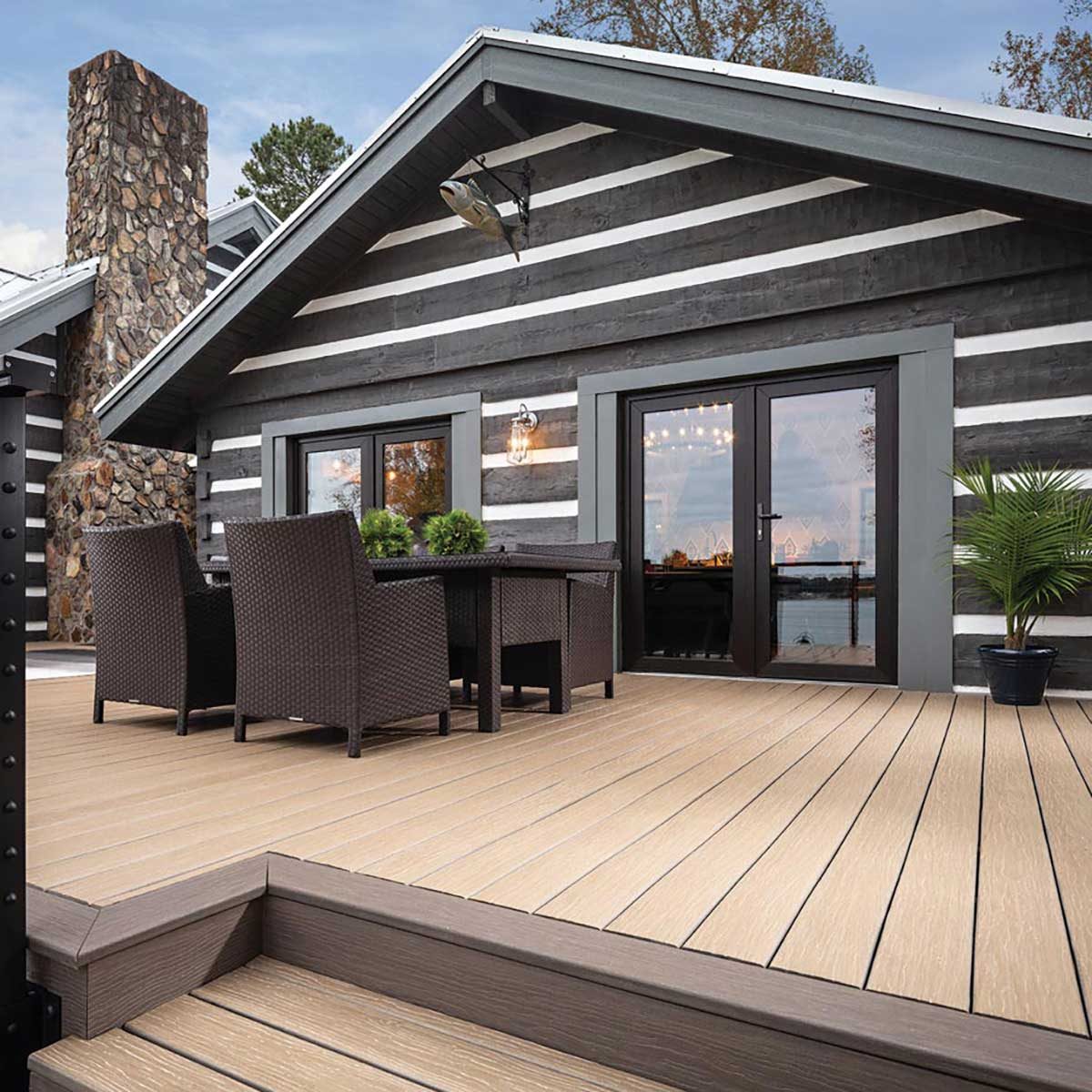Composite decking comes in an array of colors, so choosing a shade that complements your home can be a challenge. Use these expert tips as a guide.

How to Choose the Right Composite Decking Color

Composite decking colors have come a long way. To keep up with design trends and provide customers more variety, decking manufacturers now offer a vast assortment of hues and grains. However, this range of choices can be confusing for homeowners struggling to find the perfect tone and texture for their deck.
Settling on the “right” color is mainly a matter of personal taste. Here are a few suggestions for choosing composite decking that will enhance the beauty of and add value to your home and withstand the test of time, so you’ll enjoy it well into the future.
On This Page
Use Decking Colors to Complement Your Home Design
Your deck should complement your home’s overall look and create a sense of harmony.
Begin by considering the dominant color family feautred on your home’s exteriors. Are the colors mainly warm with red or orange undertones, or cooler colors with blue or green hues? Warm colors pair well with deep browns and burgundies while cooler colors shine against lighter grays or tans.
Once you’ve identified whether your home exteriors lean towards warm or cool tones, you can narrow your color choices to options within the same family. That doesn’t mean you have to match the color exactly.
“Balance is key,” advises MoistureShield Senior Brand Manager Molly Werner. “Don’t be afraid to experiment with contrasting colors.
“You can create impactful designs by using contrasts to your advantage. Mix dark and light colors or dark browns with blondes! You can even create an `area rug’ effect, starburst design or border using contrasting colors.”
Also consider the architectural style of your home, according to Blythe Yost, CEO and co-founder of Tilly, an online landscape design company. “Are you more traditional or more transitional?” she asks. “Traditional decking tends to be browner, more contemporary selections are grayer.”
Consider Your Location
Also consider your wider geographic location. If you live in a thickly wooded area, like New England or the Pacific Northwest, composite decking with deep brown or reddish hues will blend well with the surrounding vegetation. For coastal homes in Florida or California, light honey or driftwood-gray shades capture a beachy, nautical vibe that perfectly fits the oceanfront.
Remember, too, that darker colors retain more heat under direct sunlight. These tones are not a good choice for warm, sunny climates where deck temperatures can reach 160 degrees F, according to research by MoistureShield.
“If you are looking at a dark brown decking option in a southern application, be sure you have ample shade to offset the heat,” Yost says. “Alternatively, the lighter options can be almost reflective in the sun and make for an overly bright space.”
Use Deck Color to Add Depth
Once you’ve chosen a cool or warm tone, add some depth to your deck. Composite decking colors are often variegated to look more like natural wood grain. “Simply defined,” explains Werner, “variegated means exhibiting different colors, especially as irregular patches or streaks, in plants for example.”
Most composite decking manufacturers use variegated patterns and multiple colors to emulate natural wood, but some look more natural than others. “It is not necessary to select the most lifelike version, but you should look at the different solutions developed by different manufacturers — one may appeal to you more than another,” advises Yost.
Don’t Forget the Railing Color
You can add a dash of flair to your deck by choosing a railing that’s a different color than your home’s exterior or the decking itself. A railing in a similar yet complementary shade creates a seamless, understated look that creates cohesion between your home’s architectural style and outdoor space. You can also match the deck railing to the color of your window frames for a pleasing color echo.
Railing in a contrasting color adds a pop of statement style for a more eye-catching, professional design feel. The most popular options are white and black. White complements most exterior and decking colors and is especially popular in coastal areas. Black railings add a chic touch to brick or stone houses.
At-Home Trial
Choosing a color for your composite decking and railing is an important decision. So before you commit to a shade and texture, request a sample to judge the color next to your home.
“Be sure to get samples of the decking options and look at them in many different lights and angles,” suggests Werner. “Colors can feel very different in the shadows of morning versus the heat of the day.”
Viewing a few samples can also help you settle on a final choice. It may take some time to choose the right composite decking color to suit your home and style, but the extra effort will be worth it once you have an inviting deck that you and your family will love for years to come.



















